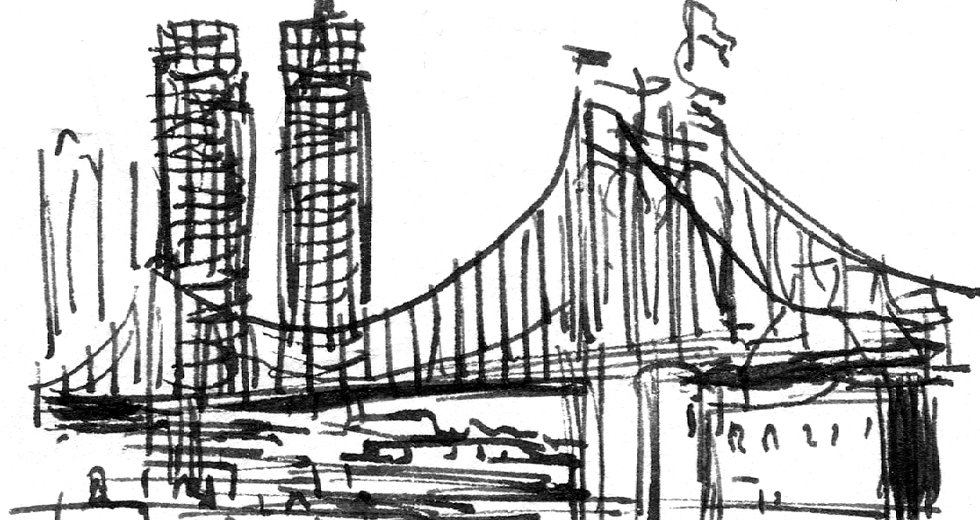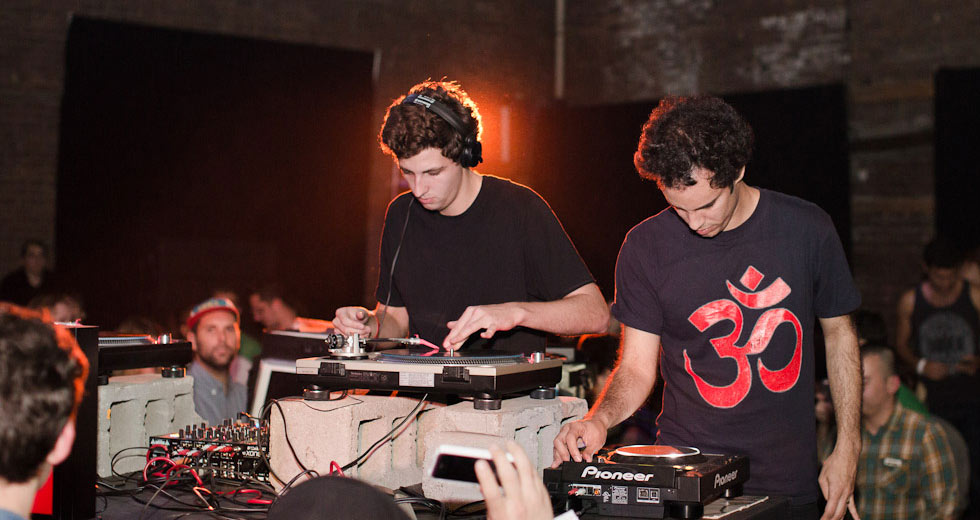Interview: Phade of The Shirt Kings
Fashion has always been an important part of hip hop culture. The Shirt Kings – a trio of artists raised on graffiti in the New York of the late ’70s and early ’80s – were among the first to understand that new music demanded new clothes. Artists like Jam Master Jay, Big Daddy Kane and more agreed: The Shirt Kings’ whimsical custom-made T-shirts were snapped up by just about every early hip hopper you’d care to name. This month a book celebrating the work that emerged from their storefront in Queens called Shirt Kings: Pioneers of Hip Hop Fashion was released. We caught up with Phade, one of the group’s members, to chat about how he went from bombing trains to designing clothes.
In reading the book, I was struck when you said that everyone around you seemed to be doing graffiti growing up. But then they stopped at a certain point. Why?
When they got to be 16 or 17, it was over. The guys who kept going, people would look at them and say, “Why you still writing dude? We did that when we were kids.” [laughs] I kept going and got ridiculed, criticized. But then I connected and found likeminded people, and we just fed off each other to keep going. In figuring out how to transfer the art from the trains to the shirts, I found a lane to make it a job.
How did you get your name?
[laughs] I would hear my brother and older guys talk about certain writers. I always took a mental note of those names. When the guys would be in front of the building with the Black Books tagging up, you would always see a Phase 2 tag. When it came to Phase, everybody would stop. “Oh, you gotta Phase tag?!” I was drawn to that respect and his mystique. No one knew what he looked like.
So I named myself after him. Phase 3. I tagged it everywhere until I got to high school and one of my friends let me know that I shouldn’t do that anymore. So I just changed it a little bit after that.
Tell me about this high school. It wasn’t a public school, right?
It was a specialized arts high school, and it definitely seemed kind of intimidating. I was forced to go take the test by a couple of friends, Kaos One and DJ Doc Larock. They showed me how to do acrylics on the side of the pants and jackets. They knew I had a love for it because I was always bothering them. [laughs] I remember I stumbled on to Kaos One’s Black Book at his apartment one day. We were DJing and I was going through the crates, and I said, “What’s this? It looks like a Black Book!” When I saw that it was Kaos One, it was like finding out your friend is Batman. I couldn’t believe this legend lived in my building.
How did the music connect with graffiti?
Well, the music heavily influenced The Shirt Kings. We would listen to it, dissect and then take the most memorable quotes or circumstances and then create them on the shirt. K-Solo had a song called “Your Mom’s Is In My Business,” so I drew Bamm-Bamm [from The Flintstones]. He’s saying to Pebbles, “Yo, your moms is in our business!” [laughs] They had on Fendi and Gucci. It’s putting all the things you like together on a shirt. All your worlds. All the things you want to attain or aspire to.
When did you find out you could make a little bit of money off what you were doing with shirts?
Off the first one. I went home, my Mom took a look and she said, “Oh, this is nice! Make me one!” I was like, “For real?” So I did a flower and then she handed me five dollars and I was like, “Wait a minute...” [laughs]
When did you make the move into doing hip hop-related stuff on shirts?
It kind of came like a dream like, “Wow, I wonder if I could...” When I moved to the Bronx I would run into some of the rappers. I was younger, but my brother knew these guys. So I could go to practice rooms where Funky 4 + 1 would be in the basement. I was able to see them singing their parts a cappella. It was amazing to watch. I believe Doc La Rock and Buddy Esquire did their acrylic jackets, so that seed was already planted in me. With the airbrush stuff, that just became a different medium. I ran into Larry Love from Grandmaster Flash, and he said he wanted a shirt. He went on tour in 1983 or 1984 and he was on stage wearing this shirt which had a portrait of himself. The feedback was, “Wow! Flash and everybody loved your shirt!” So I thought, “Man... If I could get a shirt to Flash...” He was like the Jay-Z of the day. They were my rock stars.
A lot of people seemed to ask for portraits of themselves.
A guy might not be able to afford all of the Polo wear that he wanted. But he could scrape together $50 and buy a Shirt Kings shirt of him wearing it.
It was beyond just a portrait. People wanted to project themselves in a certain way. It wasn’t just their face. It was also the gear. So a guy might not be able to afford all of the Polo wear that he wanted. But he could scrape together $50 and buy a Shirt Kings shirt of him wearing it. [laughs] Some people say there’s a rift between the young and the old, but if you listen to Melle Mel... “A castle and a yacht / Two million in gold / Because rap is the game I control.” He speaks about material things. It’s just that the next generation got those material things. And the generation after that became businessmen.
How did the store come about in the Coliseum Mall?
That was suggested by Jam Master Jay. My friend came by one day and said, “Yo, I know Jam Master Jay.” I was like, “Yeah, right...” So went out to Jamaica, Queens and walked to Hollis... which took about two hours. We eventually got there, knocked on the door and poof! There he was. I painted him a big gold nameplate on a black sweatshirt, and he said, “Go to the avenue and find a store.” So that’s what we did.
So many of the shirts are based on cartoons in some way.
Yeah, we love cartoons to this day. I still watch them. It’s just taking your favorite character and flipping them into who you perceive – or want – them to be. We’d pick the character that someone maybe resembled and then change them to embody who they were. Somebody would say, “Come outside and take a picture of my car and put it in the back. And make sure Bugs Bunny has a rasta hat on.” [laughs] We were just vehicles to help people do that.
Did you ever get a call from Disney?
I wish I would’ve. Disney did capitalize on what we did. There are a lot of urban characters based on The Shirt Kings influence, like the Tasmanian Devil with his denim pants or Bugs with the hat to the back. If anything they should thank us for getting them into the hood!

